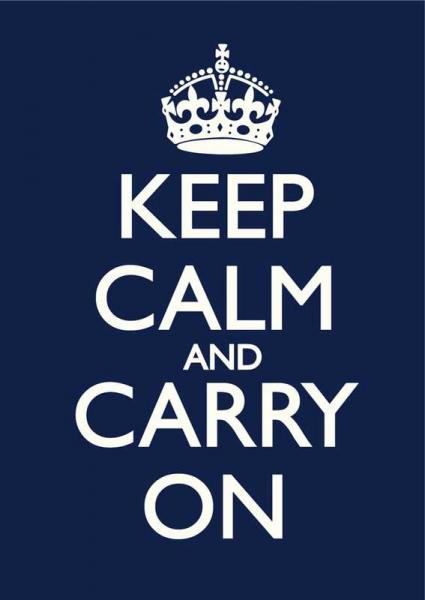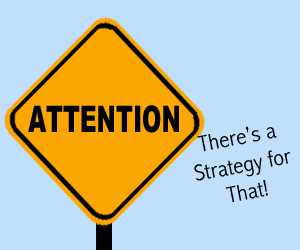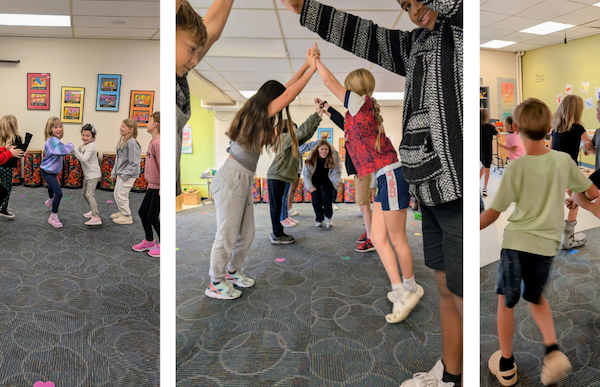
How DO You Eat an Elephant?
May 14, 2015
“Keep Calm and Carry On”
June 17, 2015
She sat staring at the PowerPoint presentation beaming from the whiteboard. It was taking everything she had to stay with the lecture. “SLANT,” she thought, as she struggled to hang on.
SLANT stands for:
- Sit up
- Lean in
- Ask a question
- Nod yes/no
- Track the speaker
It was a strategy she knew well, and while it was working, it didn’t make it any easier to stay focused on the information being presented. There was a moment though, during slide 5, that piqued her interest. The instructor started addressing the slide with the comment, “Right-brained people like this slide because it represents the number concept in visual format.” Then he slid back into the constant drone of numbers and unfamiliar vocabulary, and the energy that saw a momentary pop drained once again.
Maybe she could gather the quiet courage to stand behind her chair. That would help her concentrate on the important concepts being discussed, she thought; but no. The instructor did not know her well, and she was concerned he would take offense to her action, and judge. She would continue to sit, shifting back and forth, tensing first her back muscles, then her legs, one at a time. This WOULD end, she told herself. It would surely be over soon.
Has this feeling ever come over you during a class lecture or important meeting at work? Most likely it has. Your ability to stay connected depended upon your willingness to accommodate the feelings and take action. What strategy did you employ, and did it actually support you as a learner and listener? To accomplish refocus and activation, several key strategies must be engaged. First, the goal is to recognize the challenge – to be aware that attention is waning, and that something needs to be done quickly. At this point, having a cadre of strategies available makes the shift more seamless. In the time it takes to think about what the heck to do to reconnect, more distance will come between you and understanding the information presented. A strategy that can be employed quickly and systematically is most likely to lead to a successful learning outcome.
So do you think the student mentioned at the beginning of this piece actually learned anything?

I can assure you she did. You see, that “she” was me. As I sat in the retirement planning meeting with my very number-savvy husband, it occurred to me that this must be exactly how it feels to have attentional issues in the classroom. The experience highlighted for me the importance of having on-demand strategies when learning gets tough, and being aware enough to actively engage those strategies. At the end of the day, it is also critical that there is a mental check-in to identify lapses in understanding, where clarification and re-teaching may be needed. None of this comes naturally. It truly takes significant adults to guide, illuminate, coach, mentor, hold accountable, and communicate regularly with children who struggle with attentional issues and executive dysfunction.
Those significant adults need to be well versed in a wide variety of strategies, to teach children to use them, and to cycle back regularly to get feedback from students on what they do when they have important information to take in and the satisfaction level is low. Before tackling activities that require concentration, it is important to ask the question again, and afterwards to check-in and see how the strategies worked. This is how it becomes automatic when “the feeling” creeps in.
Dr. Peg Dawson’s books, Smart but Scattered, and Smart but Scattered Teens, are full of great strategies for supporting concentration, working memory, self-regulation, activation, organization, and much more. Check them out at the library, and let me know what you think. In the meantime, you will find me in the business section, at the standing desk, poring over Retirement Investing For Dummies.
Blogger Barbara Hunter, MEd, shares her expertise in the use of technology to support learning. If you have questions, please contact Barbara at .



